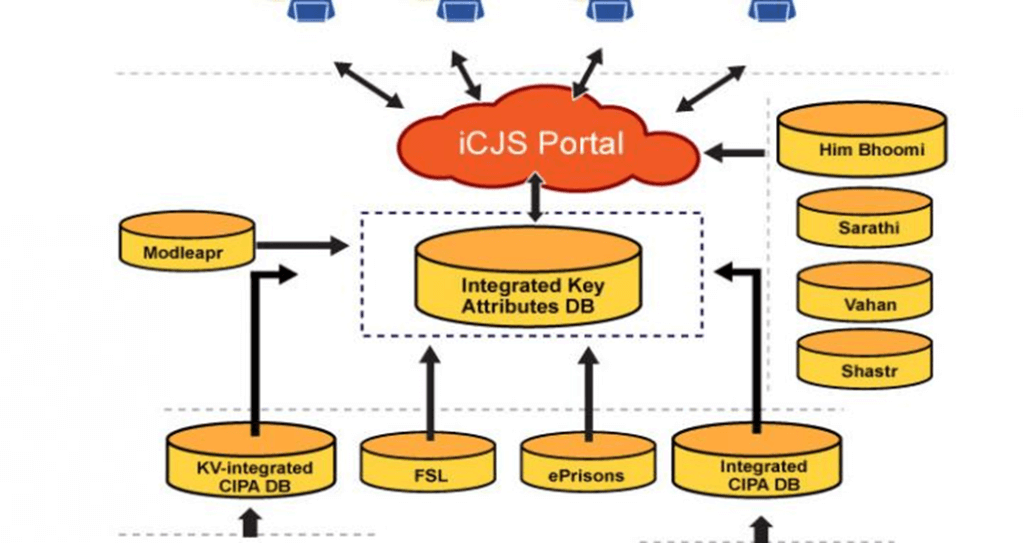The Ministry of Home Affairs (MHA) has recently introduced a new feature on its e-prosecution portal to ensure timely disposal of criminal cases and fix accountability of government lawyers. The system will send alerts to senior officers whenever a public prosecutor seeks a stay in a criminal case more than twice. This move is part of the Interoperable Criminal Justice System (ICJS) project, which aims to integrate the nation’s primary IT system for criminal justice delivery.
Interoperable Criminal Justice System (ICJS)
The ICJS project connects the five pillars of the criminal justice system, namely police (through Criminal and Crime Tracking and Network Systems), e-Forensics for forensic labs, e-Courts for courts, e-Prosecution for public prosecutors, and e-Prisons for prisons. The project is being carried out by the National Crime Records Bureau (NCRB) in collaboration with the National Informatics Centre (NIC), and it will be implemented in partnership with the union territories and states.
In Phase-I of the ICJS project (2018-2022), individual IT systems have been implemented and stabilized, and the search of records has been enabled on these systems. Under Phase-II (2022-23 to 2025-26), the system is being built on the principle of ‘one data one entry,’ whereby data is entered only once in one pillar, and the same is then available in all other pillars without the need to re-enter the data in each pillar.
Significance of ICJS
This system connects more than 16,000 police stations across the country and has a database of 28.98 crore police records that can only be accessed by law enforcement agencies and the judiciary. With the aid of the ICJS platform, the metadata of FIR and charge sheet can be accessed by all the High Courts and subordinate courts. Documents like FIR, case diary, and charge sheet are uploaded by police in PDF format for utilization by the courts.

About National Crime Record Bureau (NCRB)
The National Crime Record Bureau (NCRB) was set up in 1986 to function as a repository of information on crime and criminals under the ambit of the Ministry of Home Affairs. It was established on the recommendations of the Tandon Committee to the National Police Commission (1977-1981) and the MHA’s Taskforce (1985). The Bureau has also been entrusted to maintain the National Database of Sexual Offenders (NDSO) and share it with the States/UTs on a regular basis. NCRB has also been designated as the Central Nodal Agency to manage technical and operational functions of the Online Cyber-Crime Reporting Portal. “Crime in India” has been published by the NCRB since the year 1953.
About National Informatics Centre (NIC)
The National Informatics Centre (NIC) was established in 1976 and is located in New Delhi. It is under the aegis of the Ministry of Electronics and Information Technology. NIC provides network backbone and e-Governance support to the Central Government, State Governments, and UT Administrations.
Why In News
The Ministry of Home Affairs’ (MHA) e-prosecution portal has introduced a new feature to ensure prompt disposal of criminal cases and hold government lawyers accountable. The feature will send notifications to senior officers if a public prosecutor seeks a stay in a criminal case more than twice. This e-prosecution module is integrated into the Interoperable Criminal Justice System (ICJS), which is a national platform that connects five pillars of the criminal justice system in India.
MCQs about Interoperable Criminal Justice System in India
-
Which of the following is a pillar of the Interoperable Criminal Justice System (ICJS)?
A. e-Prisons for prisons
B. e-Finance for financial records
C. e-Transport for transport records
D. e-Health for medical records
-
Which organization is responsible for maintaining the National Database of Sexual Offenders (NDSO)?
A. National Informatics Centre (NIC)
B. National Crime Records Bureau (NCRB)
C. Ministry of Electronics and Information Technology
D. Ministry of Home Affairs (MHA)
-
What is the purpose of the e-prosecution module in the Interoperable Criminal Justice System (ICJS)?
A. To integrate the nation’s primary IT system for criminal justice delivery
B. To provide e-Governance support to the Central Government, State Governments and UT Administrations
C. To fix accountability of government lawyers
D. To manage technical and operational functions of the Online Cyber-Crime Reporting Portal
-
What is the main objective of the Interoperable Criminal Justice System (ICJS)?
A. To connect more than 16,000 police stations across the country
B. To build a database of 28.98 crore police records
C. To ensure timely disposal of criminal cases
D. To integrate the nation’s primary IT system for criminal justice delivery
Boost up your confidence by appearing our Weekly Current Affairs Multiple Choice Questions
![]()


